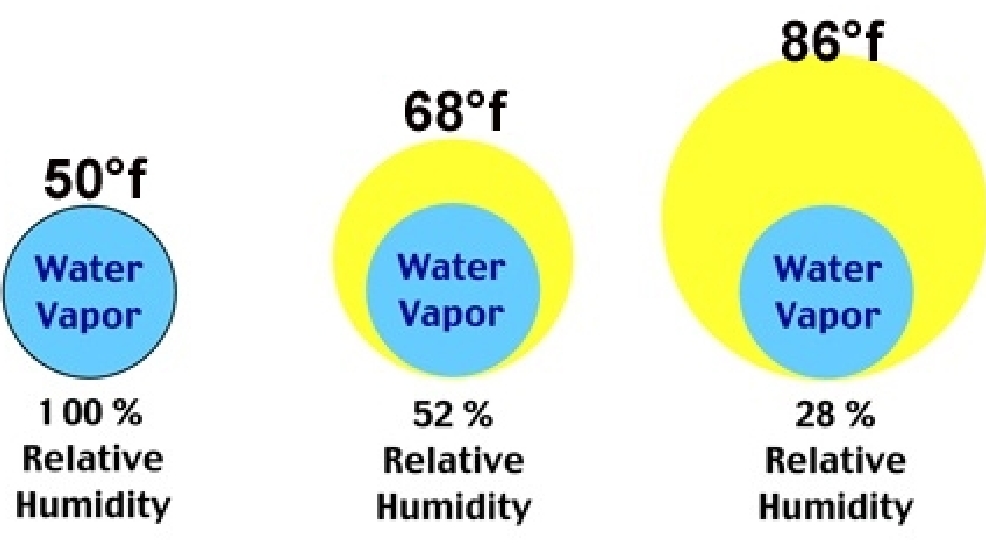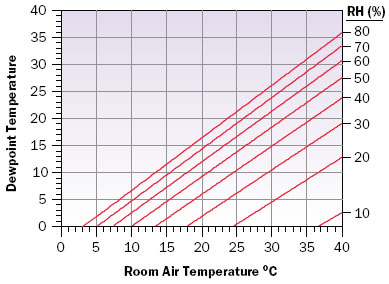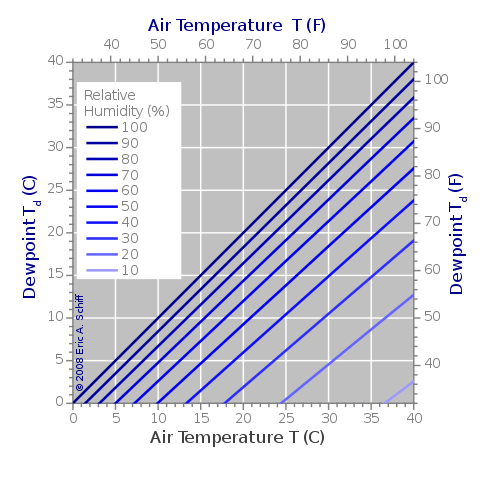

A higher ambient pressure yields a curve under the current curve. For a lower ambient pressure, a curve has to be drawn above the current curve. This graph shows the maximum percentage, by mass, of water vapor that air at sea-level pressure across a range of temperatures can contain. General aviation pilots use dew point data to calculate the likelihood of carburetor icing and fog, and to estimate the height of a cumuliform cloud base. When the moisture content remains constant and temperature increases, relative humidity decreases, but the dew point remains constant. A relative humidity of 100% indicates the dew point is equal to the current temperature and that the air is maximally saturated with water. If the air is very humid and contains many water molecules, the dew point is high and condensation can occur on surfaces that are only a few degrees cooler than the air Ī high relative humidity implies that the dew point is close to the current air temperature. If the air is very dry and has few water molecules, the dew point is low and surfaces must be much cooler than the air for condensation to occur. The dew point depends on how much water vapor the air contains. This can happen if there are not enough particles in the air to act as condensation nuclei. If the temperature is below the dew point, and no dew or fog forms, the vapor is called supersaturated.

In the air, the condensed water is called either fog or a cloud, depending on its altitude when it forms. The condensed water is called dew when it forms on a solid surface, or frost if it freezes. At temperatures below the dew point, the rate of condensation will be greater than that of evaporation, forming more liquid water. In technical terms, the dew point is the temperature at which the water vapor in a sample of air at constant barometric pressure condenses into liquid water at the same rate at which it evaporates. In normal conditions, the dew point temperature will not be greater than the air temperature, since relative humidity typically does not exceed 100%. If all the other factors influencing humidity remain constant, at ground level the relative humidity rises as the temperature falls this is because less vapor is needed to saturate the air.

In liquids, the analog to the dew point is the cloud point. When the temperature is below the freezing point of water, the dew point is called the frost point, as frost is formed via deposition rather than condensation. When there is more moisture in the air, the dew point is higher. When this occurs via contact with a colder surface, dew will form on that surface. When cooled below the dew point, moisture capacity is reduced and airborne water vapor will condense to form liquid water known as dew. The dew point is the temperature to which air must be cooled to become saturated with water vapor, assuming constant air pressure and water content.


 0 kommentar(er)
0 kommentar(er)
